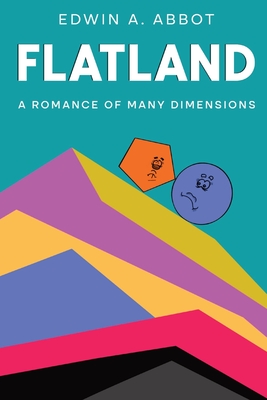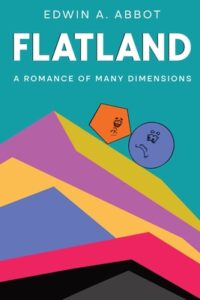Section 1: Of the Nature of Flatland
bySection 1 introduces a world unlike ours—Flatland—a place confined entirely to two dimensions. The name is not used by its inhabitants, but it serves to help three-dimensional readers understand the limitations of life in such a plane. Imagine a sheet of paper where geometric shapes—Lines, Triangles, Squares, and more—move freely along the surface. They cannot rise above or sink below it. These figures aren’t drawn or imagined; they are living, thinking beings, each defined by their sides and angles. Years ago, this world was the only reality its narrator knew. Since then, however, his mind has been expanded, leading him to reflect on his former ignorance. What was once his entire universe has now become merely a country in a much larger existence.
To someone from a three-dimensional world, the idea of not recognizing shapes visually might seem strange. But in Flatland, such recognition is impossible. All figures appear only as straight lines, regardless of their true form. A Triangle, Square, or even a Circle can’t be identified just by looking—at least not from the Flatlander’s perspective. Vision is restricted to a horizontal plane, making depth and angle completely invisible. To understand this, one can use a simple experiment. Place a coin on a table and look down—it appears circular. But as the eye is lowered closer to the table’s surface, the coin becomes an ellipse, and eventually, a flat line. When the eye is perfectly level with the table’s edge, only a narrow strip is visible, indistinguishable from a line. This is how Flatlanders see each other—nothing more than varying shades of linear brightness.
Because of this limitation, identification in Flatland depends not on sight but on subtler senses. Individuals must rely on other methods such as voice recognition, touch, or even advanced techniques learned through education. While geometric variety exists, it remains visually hidden unless one develops the skill to interpret slight differences in brightness and length. In essence, Flatland operates under a completely different understanding of space, where what you see can’t be trusted as a full representation of reality. The absence of vertical perception has deeply influenced the society’s development, shaping not only its methods of recognition but also its entire worldview. A Square doesn’t just see the world in straight lines—he lives in a society where everything is measured in lines, judged by lines, and limited by them.
Even their belief systems and social order are formed around this dimensional constraint. Since no object can be observed from above, concepts like height or volume don’t exist. The very idea of a cube or a sphere would be incomprehensible to most Flatlanders. Their world is rich in structure, yet bound by what they can perceive. Just as a shadow gives hints of a three-dimensional object, Flatlanders only experience faint clues of the broader dimensions they cannot access. This limitation, while accepted by most, begins to feel restrictive for those who think deeply. The narrator, now aware of dimensions beyond Flatland, reflects on this boundary with a sense of loss and discovery. What was once certainty now appears incomplete.
Interestingly, this mirrors how human understanding often works. We live within the limits of what our senses and tools can detect, assuming that to be the whole truth. But history shows us that deeper layers always exist beyond our first impressions. Just as Flatlanders must learn to question the reality they see, so must we challenge our assumptions to grow in knowledge. The narrator’s journey begins here—not with rebellion or revolution, but with a reevaluation of what seemed obvious. It’s a reminder that truth often starts at the edges of perception, where imagination meets observation. And in Flatland, that edge is a literal one—the line they see, and the world they think they understand.


